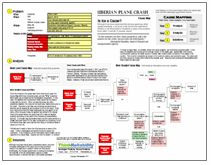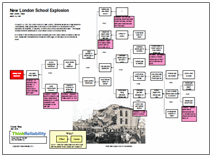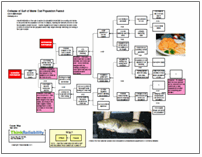By Kim Smiley
On August 13, 2011, a stage at the Indiana State fair collapsed, killing seven and injuring dozens more. The accident occurred just before 9 pm as a crowd waited to watch the popular country band Sugarland perform.
Why did the stage collapse? What caused this tragic accident to occur?
This incident can be analyzed by building a Cause Map, an intuitive, visual format for performing a root cause analysis. The first step when beginning a Cause Map is to determine what goals have been impacted. In this example, the focus will be on the safety goal since there were fatalities and many injuries. Once the impact is determined, the Cause Map is built by asking “why” questions to determine what causes contributed to the accident.
 In this example, people were killed and injured because they were near the stage and the stage collapsed. They were near the stage because they were waiting for a concert and the area had not been evacuated. The area had not been evacuated because the decision to evacuate wasn’t made in time. The decision didn’t happen in a timely manner because it wasn’t clear who had the authority to make the decision because there was not an adequate emergency plan in place. The bad weather wasn’t a surprise. The storm was being monitored and the National Weather Service had issued a warning, but the decision to evacuate wasn’t made until too late to prevent the tragedy.
In this example, people were killed and injured because they were near the stage and the stage collapsed. They were near the stage because they were waiting for a concert and the area had not been evacuated. The area had not been evacuated because the decision to evacuate wasn’t made in time. The decision didn’t happen in a timely manner because it wasn’t clear who had the authority to make the decision because there was not an adequate emergency plan in place. The bad weather wasn’t a surprise. The storm was being monitored and the National Weather Service had issued a warning, but the decision to evacuate wasn’t made until too late to prevent the tragedy.
Recently findings by investigators determined that the stage collapsed because it wasn’t up to code. The structure was required to be able to withstand winds up to 68 mph, but the stage collapsed at winds below this limit. Investigators determined that the lateral supports were inadequate and the stage wasn’t strong enough to stand up to the wind. The stage also wasn’t inspected because it was a temporary structure and they are not required to be inspected.
On Tuesday, (April 17, 2012) Indiana Governor Daniels reported that he has ordered temporary outdoor structures to be inspected by the Indiana Department of Homeland Security to help prevent a similar accident in the future.
To view a high level Cause Map of this incident, click “Download PDF” above.









